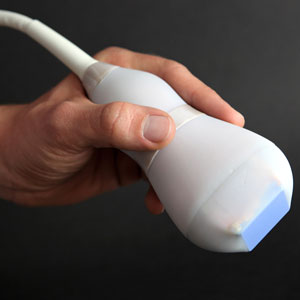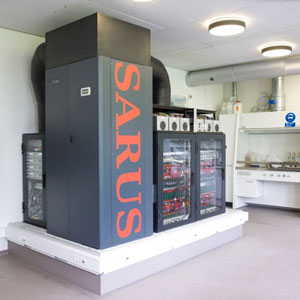A generous grant from
Innovation Fund Denmark has enabled the world’s leading researchers in the field of 3D ultrasound images to develop new, ultra-high resolution imaging.
Researchers at DTU have led the field for 20 years in developing the imaging technique used in ultrasound scanners, e.g. for scanning of pregnant women.
Now, a team of researchers at DTU is taking the technology a step further, enabling three-dimensional viewing of scanned images and at a much higher resolution than is currently available. Experiments on rats have already demonstrated that scans can be conducted with ten times better resolution than currently.
This is being developed in close collaboration with BK Medical, which has incorporated these research results into a number of scanners currently sold by the company.
Whereas capillary scans only used to show a blurred image of blood flow, the new resolution makes it possible to see the blood flow and direction of flow in the smallest blood vessels (capillaries), which are one-tenth the width of a human hair, or 10 microns across.
The fine resolution is achieved by means of tiny air bubbles used as a contrast agent during the scan.
Development of new probes and analyses
At DTU, the project is headed by Professor Jørgen Arendt Jensen, DTU Electrical Engineering. The researchers want to develop the technology for use with patients. A scan providing such high-resolution 3D images will be significant for the diagnosis and treatment of a number of diseases, including cancer and diabetes.
“However, we need a degree of further development and fine-tuning of the basic work done so far. First of all, we need to develop new methods of managing the very large amounts of data included in such high-resolution 3D scans. We also need to create algorithms to take account of body movements in connection with heartbeats and breathing. These must be counteracted to avoid blurring the scans,” Professor Jørgen Arendt Jensen explains.
The hand-held probes used by the doctor during the scan will also requirement development. The person responsible for developing the components of the ultrasound-emitting probe is Professor Erik Vilain Thomsen, DTU Nanotech.
“The probe sends and receives the sound waves that form the basis of the scanned image. This sets the bar very high in terms of probe design, as the probe has to receive a lot more signals in order to generate high-resolution 3D images. At the same time, our goal is to be able to scan 30 cm inside the body, whereas we are currently only able to scan to a depth of approximately 15 cm. This means we have to test and develop a new probe using nanotechnology and incorporating silicon instead of the conventional material, lead,” Erik Vilain Thomsen explains.
Coordinating many areas of expertise
One of the biggest challenges in developing the new ultrasound scanning technology lies in coordinating the various areas of expertise involved in its development.
“We’ve put together a team that has worked together successfully before, with access to world-class laboratory facilities. BK Medical knows how to build a scanner capable of handling the huge volumes of data required. My research team contributes knowledge of how to maximize 3D image optimization by analysing the data returned after sending sound waves into the body. And, finally, we have a research team of physicists using nanotechnology to develop a probe design capable of handling these advanced requirements,” Professor Jørgen Arendt Jensen explains.
The detailed images from future ultrasound scanners could have a major impact on health services. For example, it is hoped that they could replace MRI scans, which cost far more to run, and which many patients may find unpleasant and claustrophobic. The new ultrasound scanner will presumably also make it possible to see the effect of cancer treatment with chemotherapy, perhaps even after the first day. This will be done by measuring blood flow to the tumour, which will help determine whether the treatment is working, or whether the dose needs to be changed, for example.
Apart from DTU and BK Medical, Rigshospitalet, and the University of Copenhagen are also involved in the project, contributing to development and testing.
|

c) The ultrasound probe held by the doctor is produced collaboratively by DTU and BK Medical.
Photo: Jesper Scheel, DTU Nanotech
|
|

d) The research ultrasound scanner—dubbed SARUS—was built at DTU and can be used to produce 3D images.
Photo: Center for Fast Ultrasound Imaging, DTU Electrical Engineering.
|